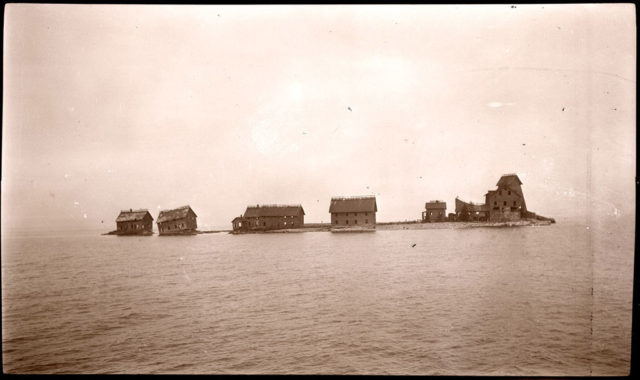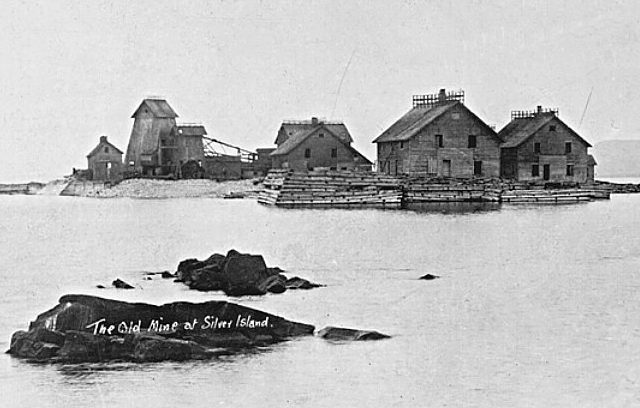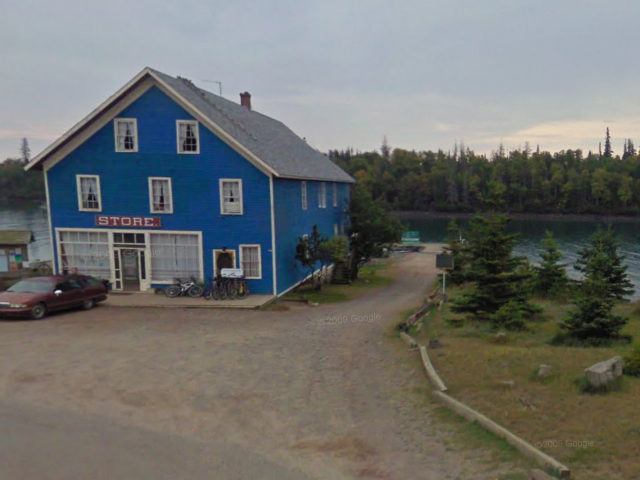Silver Islet is a small rocky island and a community which sits just off the tip of the Sibley Peninsula in Ontario, Canada.
On this island, in 1868, a rich vein of pure silver was discovered by the Montreal Mining Company. At this point in time, the island was roughly 50 metres squared and sat only 2.5 meters higher than the waters of Lake Superiors.
The site was developed, in 1870, by the Silver Islet Mining Company (owned by Alexander H. Sibley). They constructed wooden breakwaters which sat around the island so that they could hold back the waves from the lake.
They also used a crushed rock to increase the area of the island vastly. The island ended up being more than ten times its original size when they completed their work and then a small mining town was constructed upon the nearby shore.

Once the majority of the purest form of ore was removed from the original mining site; a second vein was found in 1878. By the time 1883 came, the majority of the finest quality silver had been removed, and silver prices had dropped. The end came when, before the closing of the shipping season, a vital load of coal did not arrive.
This meant that the pumps, which held back Lake Superiors waters, ceased and the islet’s mine shafts (384 meters deep) became flooded, in 1884. This would never be resolved, and so the underground mining operations stopped for good.
The mine operated for over 16 years, and during that time $3.25 million worth of silver ore was removed.

The houses built on the shore are still in use; they are now mainly used as summer cottages, privately owned and rented. The general store within the community has been reopened and has a tearoom.
This is part of an article that was written by Syd Hancock on January 21, 1972 on the occasion of Julian Cross’s death: As recounted by Syd Hancock, Silver Islet is the home of Julian (Jules) Cross, founder of Steep Rock Iron Mine in Atikokan, Ontario.
Outside the Atikokan Library & museum is a bronze plaque erected by the Ontario Department of Public Records and Archives to mark the historical significance of the Steep Rock Iron Range.

On December 29, 1971, the man who unveiled this plaque, and made possible the Steep Rock story, Julian Gifford Cross, died at the age of 83.
Born at Silver Islet on July 25, 1888, only four years after the closing of that historic silver mine, his destiny and the future of many others was inevitably associated with mining.
We have another interesting story for you:USSR Nuclear Base Turned Ghost Town
People still imagine that there is plenty of silver still to be found upon this island, but attempts to reopen the mine have been unsuccessful each time it has been attempted.
In addition, check this awesome video about Ghost Towns:
